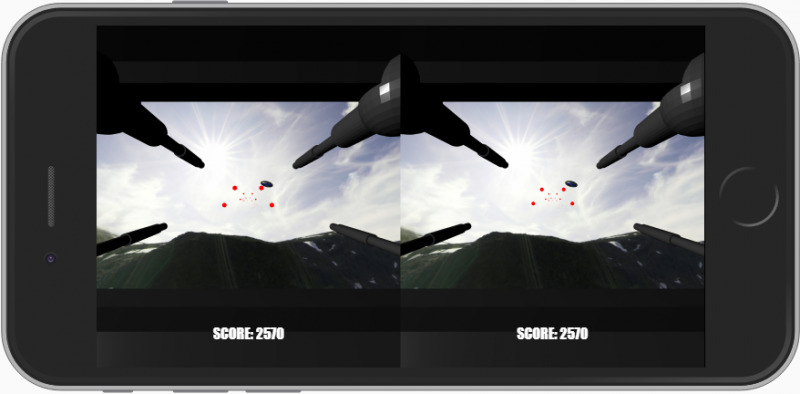In the latest issue of Wireframe magazine, Mark Vanstone shows you how to turn a 3D shooter into a VR game for a variety of viewers, from Google Cardboard to gaming headsets.

Browser development has really matured of late, with a number
of exciting new features coming to the fore. Where WebGL was well supported, the new WebXR (previously WebVR) is now becoming standard
in modern browsers. JavaScript ES5 has now been superseded by ES6, and with these new technologies, making browser-based apps – and specifically 3D games – is now a serious proposition. The other part of VR technology, the hardware, has also evolved – as mobile tech has become more powerful, so have the opportunities for cost-effective VR experiences.

If you have an old mobile phone, perhaps an Make your own virtual reality 3D Shooter B iPhone 6 or a Samsung S7, you can get a Google Cardboard headset for £6 and turn it into a rudimentary VR viewer. In this article, we’ll show you how to set up a 3D shooter to run not only on that hardware, but also on other viewers such as the Gear VR or Daydream, and even gaming headsets such as the Oculus, HTC, or Valve. All of these have web browsers built in which can support WebXR or a 3D display, and although there are some differences between how they work, the process of displaying a 3D scene is mostly the same on all of them, so we can use the Three.js JavaScript library.

To begin, we’ll start with the Three.js 3D shooter we made in Wireframe #32 – if you missed it, you can download a copy. We’ll use the same models and much of the same code. The first change, though, is to update the code to run as an ES6 module. The non-module version of Three.js is being phased out at the end of 2020, so it’s probably best to get with the times and use the new stuff. As with our earlier shooter, you’ll need to run this code from a secure web server, which, for mobile phones and gaming headsets, will mean uploading it to somewhere suitable, but if you want to see it running, you can play it at technovisual.co.uk/vr.
Basic VR viewers
Now we need to consider the hardware we’re going to use to run our game. Let’s start at our baseline, Google Cardboard, and work up from there. Available from many outlets online (including Google’s store), it’s a cut-out kit, which you fold up to create a viewer.

From a browser window inside a gaming headset environment, you can launch a Three.js VR experience
There are two lenses to look through, two magnets in a recess on the side, and velcro tabs to hold a mobile phone. The magnets on the side serve as a selection mechanism which we’ll explore later.
Next, we have Gear VR-style viewers. There are many different types, priced from around £12 to £40, and these are essentially a better-built plastic version of the Cardboard but with a button on top to act as a selector. Phones of varying sizes can be used, and as long as the device isn’t more than about four years old, it should be up-to-date enough to run the 3D software.

For example, the six-year-old Samsung S5 is capable of displaying VR, but it’s a bit too slow to make the experience pleasant, whereas a five-year-old iPhone 6 is quite capable of displaying simple VR scenes smoothly. (With
iPhones, you may need to switch on Experimental Features in the Safari settings, however.)
Proper pro kit
Gaming headsets are a bit different, since they have a built-in screen in the headset, and – in the case of the Oculus Go and Quest – an Android computer in there as well. Tethered headsets use the power of a connected computer to generate the display, and all of them use a slightly different
Three.js system from the cheaper viewers to generate the 3D display.
As time goes on, it’s likely that more mobile phones will be compatible with
the VR software used by the untethered gaming headsets. Gaming headsets also have sensors that track your movement as well as the tilt of the headset, providing six degrees of freedom.
Get the rest of the tutorial in Wireframe #44

This is just a taste of the comprehensive guide included in the latest issue of Wireframe magazine. If you’re not a subscriber, you can download a PDF copy for free from the Wireframe magazine website. Start at page 50 and work your way through to create your own VR shooter game.
And if you want to take advantage of Wireframe magazine’s latest subscription deal, you can get it for just £10 at the official Raspberry Pi Press online store.
Website: LINK

